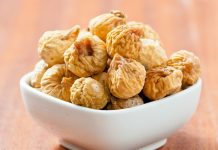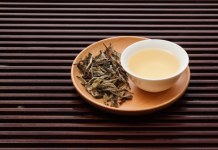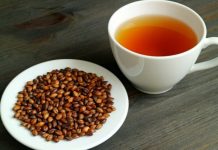Milk products have been known for many thousands of years now. One of those products is buttermilk. Buttermilk has been known for many hundreds of years now. It can be a savior during summer for kids as well as for adults. Traditionally, buttermilk was the leftover, after churning of butter out of cream and another other form of buttermilk includes diluted yogurt in some parts of the world.
The traditional way of preparing buttermilk is to first boil the milk and collect the top cream layer. The collection of the top cream layer can be easily done when the milk is fermented to yogurt. Yogurt can be easily prepared by adding a very amount of yogurt with live active yogurt culture bacteria to lukewarm milk. It has to be left in a warm place overnight for the bacteria to ferment the milk into semisolid yogurt. Using full cream milk for this purpose can be good because all of the cream will rise and settle as top layer. This top layer can be removed and stored in a cool place. If this process is done for some days and enough cream is accumulated. This cream needs to be churned, which results in the cream to be separated from the butter and what’s left behind is the buttermilk.

Source: Manjulas Kitchen
Another way of preparing buttermilk is by diluting yogurt and churning it thoroughly. This is the easiest and the most effective way of making buttermilk and it can be a big relief during hot summers.
Is buttermilk safe for kids?
Generally buttermilk is considered as a safe food as it does not cause any adverse allergic reactions. But, infants and children who suffer allergic reactions to cow’s milk have to be careful, as the same proteins found in the milk are present in buttermilk as well.
Also, buttermilk if it is the byproduct of extraction of cream from butter can cause throat infections and common cold. As it is stored for several days for butter to accumulate to a large enough quantity for extracting butter, harmful bacteria can build up in the butter and cause throat infections and cold. So, before storing and serving, cream extracted buttermilk, make sure that you pasteurize or boil it. Boiling kills all the harmful bacteria and the buttermilk is good to go.
Buttermilk made from diluted yogurt, on the other hand can be very safe because it only contains good bacteria and the acidic environment in the yogurt prevents the growth of other harmful bacteria. So, it is safe to consume.
Watch video: Health Benefits of Buttermilk For Infants, Toddlers and Kids
For the latest videos, please subscribe to our channel: parenting healthy babies
Health Benefits of Buttermilk for kids
As mentioned earlier, buttermilk offers numerous health benefits for kids as well as for adults. Here are some of those health benefits.
- Great drink during summers: More often kids playing on a hot sunny day would want to chill off with some cool soda. Instead of sugar filled carbonated water, giving them a glass of cool buttermilk would be ideal. It’s the best way of rehydrating and also supplying essential electrolytes, minerals and vitamins.
- Good for digestion: According to Ayurveda, the ancient Indian school of medicine, buttermilk made from diluted yogurt is beneficial in digestion. For this you’ll need 1 cup of cultured or homemade yogurt, two or two and half cups of water, a teaspoonful of cumin seeds powder, half an inch piece of ginger crushed and a pinch of salt. Add water to the yogurt and whip it till it turns into buttermilk. And then add the cumin seeds powder, crushed ginger and salt. Have this buttermilk after a heavy meal and it helps in better digestion (Singh, Davidson, 2014).
- Strengthens the immune system: Buttermilk is laced with good bacteria which are gut-friendly are also called probiotics. These bacteria help in maintaining a healthy gut and a healthy body as well. These friendly bacteria help defend your gut from the attacks of infections causing bacteria.
- Good source of calcium: Just as milk, buttermilk is also a good source of calcium. Kids might not like to have 2-3 glasses of milk daily. But, swapping a glass of milk with buttermilk can be helpful in making sure they have the required amount of calcium daily.
- Effective food in diarrhea: Kids can suffer from diarrhea due to number of reasons. One of the main reasons being bacterial infection of the gut. This can be effectively controlled with buttermilk. The bacteria present in the buttermilk and the presence of lactic acid in buttermilk can make it harder for the bacteria to survive in the acidic condition. Thus, controlling diarrhea. (Bakhru, Healing Through Natural Foods).
- Good food in jaundice and hepatitis: Hepatitis and jaundice, both are diseases related to the dysfunction of the liver. With these diseases, the patient is generally prescribed fruit juice and fruit diet. During this time, buttermilk can also be included in the diet. According to H K Bakhru, the lactic acid present in buttermilk helps in reducing the formation of ammonia which is one of the causes for hepatitis and jaundice. A diet of buttermilk with honey can be included. (Bakhru, Foods That Heal).
- Food source during recovering from cholera: Buttermilk has been prescribed as a food source during the recovery of cholera. H K Bakhru, in his book, “Nature Cure” describes that after the acute stage of cholera is passed, the patient can be given coconut water and buttermilk.
- Good source of Vitamin D: There are not many foods which supply vitamin D. Well, buttermilk is one of them. Vitamin D can be found in whole buttermilk. Vitamin D strengthens bones and teeth by helping absorb calcium and phosphorus in the body.
Nutrition in Buttermilk (Whole)
According to the National Nutrient Database, from the US Department of Agriculture, the nutrition found in Buttermilk are as follows.
| Nutrition | Value Per 100 g | Nutrition | Value Per 100 g |
| Water | 87.9 g | Energy | 62 kcal |
| Protein | 3.21 g | Total Lipid (Fat) | 3.31 g |
| Carbohydrate | 4.88 g | Calcium | 115 mg |
| Iron | 0.03 mg | Magnesium | 10 mg |
| Phosphorus | 85 mg | Potassium | 135 mg |
| Sodium | 105 mg | Zinc | 0.38 |
| Thiamin | 0.047 mg | Riboflavin | 0.172 mg |
| Niacin | 0.090 mg | Folate | 5 ug |
| Vitamin B-12 | 0.46 ug | Vitamin A | 165 IU |
| Vitamin E | 0.07 mg | Vitamin D | 52 IU |
| Vitamin K | 0.3 ug |
References
Dueep J. Singh, John Davidson, 2014, Introduction to Ayurveda – Keeping Healthy the Ancient Way. Mendon Cottage Books. https://books.google.co.in/books?id=tycTBgAAQBAJ&pg=PA37&dq=buttermilk+benefits&hl=en&sa=X&ei=–cDVcH3GpO3uQSw3IG4CQ&ved=0CB0Q6AEwAA#v=onepage&q=buttermilk%20benefits&f=false
H.K. Bakhru, 2007, Healing Through Natural Foods, Jacob Books. https://books.google.co.in/books?id=Ar_QGUc2aCwC&pg=PA56&dq=foods+that+heal+buttermilk&hl=en&sa=X&ei=YvUDVYihNdKPuAT7v4JI&ved=0CEcQ6AEwBw#v=onepage&q=foods%20that%20heal%20buttermilk&f=false
H.K. Bakhru, 1999, Foods That Heal, Jacob Books. http://books.google.co.in/books?id=jyqzV-tcDRQC&printsec=frontcover&source=gbs_ge_summary_r&cad=0#v=onepage&q=buttermilk&f=false
HK Bakhru, 2012, Nature Cure, Jaico Publishing House.












